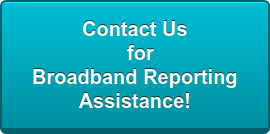 Idaho Broadband Grants
Idaho Broadband Grants
A task force convened by Idaho Governor Brad Little earlier this year released a report recommending that broadband and high-speed Internet be a strategic and economic priority for the state and that solutions remain technology neutral.
The specific recommendations include:
- Updating the state’s broadband plan to maximize federal funding opportunities;
- Establishing a state broadband office to act as a resource for a state broadband strategy including consumer education, facilitating opportunities and funding sources, and coordinate where Idaho can leverage existing infrastructure, such as roadways and utility assets, to reach unserved communities in the state. The office would also be the repository for all publicly available broadband maps and data sources.
- Consider state funding options
- Improve deployment efficiency by formalizing “dig once” and “hang once” policies.
- Engage on near term projects, especially four current, unfunded projects in unserved areas.
After receiving the report, Governor Little said: “In a data-driven society, connectivity is imperative for a vital economy. Improved broadband infrastructure ensures both urban and rural Idaho will be connected and well-positioned to attract business and enhance our citizens’ quality of life. The task force members worked under an accelerated timeline to come up with the recommendations, and I appreciate them for their hard work.” He will review the recommendations and determine which ones will be included in his budget and policy recommendations for the 2020 legislative session.
_____________________________________________________________________________________________
The Regulatory Mix Today: Idaho Broadband Grants, Indiana Announces Broadband Grants,FCC 2.5 GHZ Rural Tribal Window and Technical Workshop,
US House Passes TRACED Act
_____________________________________________________________________________________________
 Indiana Announces Broadband Grants
Indiana Announces Broadband Grants
Indiana Governor Eric J. Holcomb announced the state’s the Next Level Broadband program has awarded an additional $6.3 million in funding to bring the first round total to $28.4 million for 14 broadband expansion infrastructure projects across the state The total first round funding will provide broadband infrastructure to more than 11,300 homes and commercial locations in 18 counties.
“In the 21st century, high quality, affordable broadband is essential to the success of Hoosiers and our state,” Gov. Holcomb said. “Economic development, the health of our citizens and our quality of life will be directly impacted by expanding broadband to these unserved areas.” Today’s award of $6.3 million for three broadband expansion infrastructure projects closes the Next Level Broadband program’s first round of funding. The initial $22.1 million for 11 broadband expansion infrastructure projects was announced in August.
The $100 million Next Level Broadband program is the largest single state investment in broadband. For the first round of funding, service providers could apply for up to $5 million per project to expand service to unserved areas if they provided at least a 20 percent match. Unserved areas are those without at least one telecommunication provider offering internet fast enough to provide the most basic services – at least 10 Mbps download and 1 Mbps upload. In addition to the $28.4 million awarded through Next Level Broadband, the nine telecommunications providers and utility cooperatives contributed $23.3 million in matching funds, resulting in $51.7 million total investment for broadband.
 FCC 2.5 GHZ Rural Tribal Window and Technical Workshop
FCC 2.5 GHZ Rural Tribal Window and Technical Workshop
The FCC announced that the Rural Tribal Priority Window will open on Monday, February 3, 2020, and will close on Monday, August 3, 2020. This 182-day window, coupled with six months of outreach and education that will have preceded the window, was established to allow eligible Tribes the opportunity to assess their needs, determine if spectrum is available in their communities, and prepare to file their applications. As part of its outreach efforts, the FCC will host a workshop on January 14, 2020. Further information the Rural Tribal Window, including the specifics about the application filing process, and the upcoming workshop, will be announced and posted to the Rural Tribal Window website on or before January 6, 2020.
In July 2019, the FCC modernized the regulatory framework for the 2.5 GHz band to make this mid-band spectrum available for advanced wireless services, including 5G. A significant part of this action included establishing a Rural Tribal Priority Window that will provide federally recognized Tribal entities with an opportunity to address the communications needs of their rural communities by applying for unassigned 2.5 GHz spectrum in what was formerly designated as the Educational Broadband Service (EBS). The FCC has begun an extensive outreach program to ensure that all interested, eligible Tribes have the information they need to be able to apply for this spectrum during this window and established a dedicated website that provides access to information regarding the window, including the location and dates of outreach and education opportunities. It also created a dedicated mapping tool to assist Tribes in assessing their eligibility and the amount of unassigned 2.5 GHz spectrum over their Rural Tribal Lands.
 US House Passes TRACED Act
US House Passes TRACED Act
The US House of Representatives passed the Pallone-Thune TRACED Act, a bi-partisan anti-robocalling bill authored by Energy and Commerce Committee Chairman Frank Pallone, Jr. (D-NJ), Ranking Member Greg Walden (R-OR), Communications and Technology Subcommittee Chairman Mike Doyle (D-PA), and Subcommittee Ranking Member Bob Latta (R-OH). The Act:
- Requires carriers to offer call-authentication technology to consumers and small businesses—in rural and urban America—at no additional charge;
- Requires opt-in or opt-out robocall blocking be offered at no additional charge to consumers;
- Gives the FCC the ability to step up enforcement actions against unlawful robocalls with a longer statute of limitations and increased fines in certain cases;
- Pushes the Department of Justice to bring more criminal prosecutions against criminal robocallers;
- Requires the FCC to work to stop one-ring scams;
- Helps the FCC and responsible carriers traceback and cutoff suspect phone companies that are responsible for sending vast numbers of unlawful robocalls; and
- Protects patients, doctors and hospitals from unlawful robocalls.
 In response to the bill’s passage by a vote of 417-3, the three Chairmen issued a statement saying: “We’re proud of this overwhelming vote by the House to pass the Pallone-Thune TRACED Act today. This legislation combats the robocall epidemic by ensuring every call Americans receive will be verified and can be blocked at no extra cost to consumers. It also gives the Federal Communications Commission and law enforcement the authority to quickly go after scammers. The American people are demanding relief from these calls, and the House has delivered. We look forward to quick Senate action on this bill so it can be sent to the President’s desk for his signature.”
In response to the bill’s passage by a vote of 417-3, the three Chairmen issued a statement saying: “We’re proud of this overwhelming vote by the House to pass the Pallone-Thune TRACED Act today. This legislation combats the robocall epidemic by ensuring every call Americans receive will be verified and can be blocked at no extra cost to consumers. It also gives the Federal Communications Commission and law enforcement the authority to quickly go after scammers. The American people are demanding relief from these calls, and the House has delivered. We look forward to quick Senate action on this bill so it can be sent to the President’s desk for his signature.”
In May, the Senate passed the Telephone Robocall Abuse Criminal Enforcement and Deterrence (TRACED) Act by a vote of 97-1. In July, the House of Representatives passed the Stopping Bad Robocalls Act by a vote of 429-3. There were significant differences between the two bills, which were reconciled as part of a bipartisan, bicameral agreement announced by the House and Senate last month. See the Regulatory Mix dated 11/18/19.
____________________________
The Regulatory Mix, Inteserra’s blog of telecom related regulatory activities, is a snapshot of PUC, FCC, legislative, and occasionally court issues that our regulatory monitoring team uncovers each day. Depending on their significance, some items may be the subject of an Inteserra Briefing.






